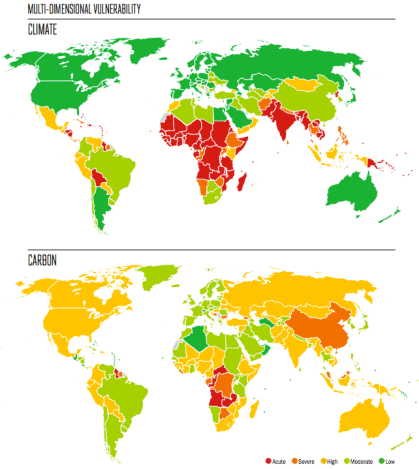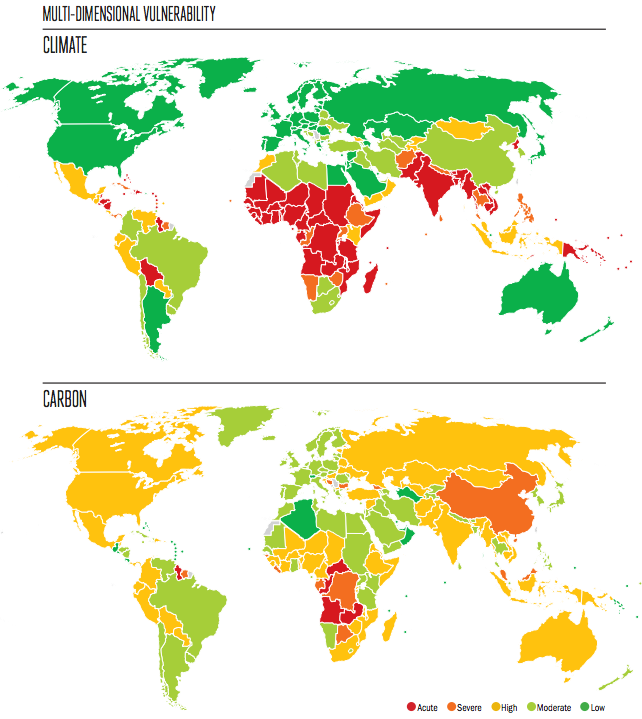The Reuters headline cuts to the chase: “100 mln will die by 2030 if world fails to act on climate – report.”
The figure is amazing. 100 million people! With global population projected to be 8.3 billion by 2030, that’s one out of every 83 people — 1.2 percent of humanity — albeit over two decades. It brings to mind images of the worst natural disasters — flood waters ripping through Manhattan, typhoons destroying the Pacific Rim.
Wrong image. Think lung disease.
The 100 million figure comes from a report, the Climate Vulnerability Monitor, created by DARA International, an organization that works to “improv[e] the quality and effectiveness of aid for vulnerable populations suffering from conflict, disasters and climate change.” The report measures 34 indicators of vulnerability to climate change and carbon-intensive economies — drought, wildfires, air pollution, oil spills. (The full report is here [PDF].)

General vulnerability of various countries to climate change and carbon-based economies. Click to embiggen.
It’s not shy about bold claims.
- Climate change and a carbon-intensive economy considered a leading global cause of death today, responsible for 5 million deaths each year — 400,000 due to hunger and communicable diseases aggravated by climate change and 4.5 million carbon economy deaths due mainly to air pollution
- Failure to act on climate change already costs the world economy 1.6% of global GDP amounting to 1.2 trillion dollars in forgone prosperity a year
The 100 million deaths claim stems from that first bullet point — 20 years times 5 to 6 million deaths a year. Here are the data, broken down by cause.

In 2002, the World Health Organization put the annual number of deaths from air pollution, including indoor air pollution, at 2.4 million [Excel file]. DARA’s figures are significantly larger.
The projected economic impact of a lack of action on carbon pollution and climate change is estimated at 3.2 percent of GDP by 2030, as in the table below.

Not enough information for you? See page 23 of the full report. It’s a doozy.
The key message the report’s authors intend to impart isn’t the two figures of 100 million deaths and 3.2 percent drop in GDP. It’s that a continued reliance on fossil fuels will disproportionately affect lower-income and developing countries.
- Climate change takes the most from those who have the least: Least Developed Countries faced in excess of 7% GDP losses due to climate change and the carbon economy in 2010
- Low-emission countries have essentially contributed nothing to climate change — if all countries were polluting only to those levels climate change would be marginal — although with the global carbon budget now all but exhausted even the lowest emitting countries can contribute or detract from the world’s ability to rise to the climate challenge
- Lacking any responsibility for climate change, the low-emission country group nevertheless experiences approximately 40% of all its economic losses, and over 80% of all climate change-related mortality
That argument, core to DARA’s mission, isn’t as appealing to headline writers.




